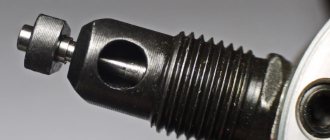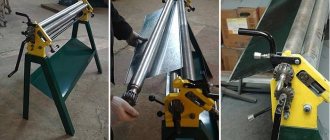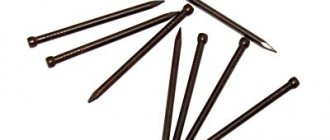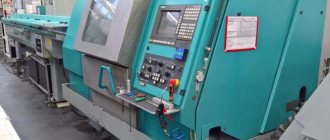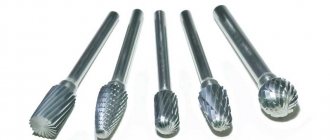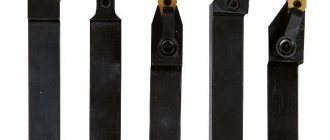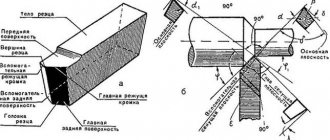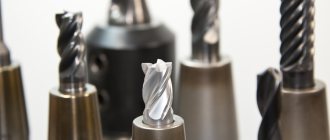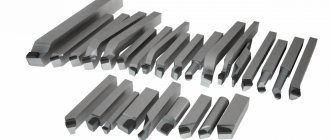There is no way to do construction without specialized tools. And it doesn’t matter whether it’s construction or dismantling, you can’t do it without special tools. One of these necessary tools is hydraulic shears, since any structure contains metal elements. There are a large number of varieties of such instruments. And each has its own specifics. However, they are all designed for cutting metal elements. Each type of scissors is sharpened for a specific cutting. There is one for cutting reinforcement, and there is one for cutting sheet metal. There are also devices for cutting various cables. In general, there are a large number of devices that are tailored to perform a specific job. And therefore, if the question arises about purchasing hydraulic shears, then you should think carefully about everything and select the necessary copy. Because you can unknowingly buy models that cannot solve the tasks you have set. Therefore, you should determine what exactly your hydraulic shears will cut. You should also choose what tool you need, manual or professional. Let's take a closer look at the rating of the best hydraulic shears for 2021.
Peculiarities
If there are concrete structures at the construction site, then hydraulic shears are great. They perform very well when cutting reinforcement. In construction, manual ones are excellent because they are lightweight and small in size and can easily cut reinforcement. During construction, they are one of the most necessary tools. They will help you cut both reinforcement and many other metals. They are in demand not only in the construction industry, but also in manufacturing.
They are used as large units that have a large hydraulic system; it itself supplies the material being processed. Hydraulic hand tools are also available. They are mainly designed for cutting small fittings, cables and other small metals. The cutting itself is carried out thanks to an internal pump, which creates the necessary pressure. Thanks to this pressure and the installed blades, metals are cut.
Hand-held instruments are in great demand due to their portability. They can be easily transported independently and carried without much difficulty. In production they use manual ones, which have a separate pump. They are designed for cutting various metals that have large dimensions. It is also possible to connect various blowers to these scissors.
Principle of operation
In operation, all hydraulic shears are similar and very simple. The only difference from conventional scissors is the method of applying force. In hydraulic ones, the force on the cutting part is supplied by a hydraulic cylinder. They work great and without any extra effort. This type has many advantages.
- Thanks to the hydraulic cylinder, there is a lot of pressure on the cutting part, which can reach several tons. However, the scissors themselves weigh only a few kilograms.
- High device mobility.
- Good cut quality.
- Hydraulic shears are safer due to their drive.
- Their knives are the best option for cutting metals.
- The cutting process is slow. Therefore, it can be easily controlled.
In addition to these advantages, there are others. These also include fast and accurate work when cutting iron. This advantage is especially important for detailed cutting. Manual hydraulic shears are very easy to work with and do not require special skills. It is enough to read the complete operating instructions only once, and this is enough for excellent and correct operation.
Varieties
There are mainly two types:
- Nibblers;
- Knife.
Knife machines have two special knives that easily cope with cutting the edges of metal. And to cut through the metal in the middle, they use nibblers.
There are currently three types of hydraulic shears:
- Manual. This type is used for cutting cables and fittings. This type is widely used in various types of work. They are mainly used in cutting various wires. Capable of cutting in fairly large volumes. Manual hydraulic shears differ from ordinary ones in their cutting blades. Professionals are also divided into two types. The first guillotine. It is quite popular and in demand. The second one is edge. The first type can easily cope with cutting bundles of wire or cables. The second type is designed to work with various sheet iron.
- Stationary. Such scissors are connected to a separate pumping station. They can cut various metals of any thickness. Stationary ones are widely used in mechanical engineering. These scissors have the largest sizes of all types.
- Sorting hydraulic shears. They are widely used in metallurgical complexes. Sorting machines differ according to the method of supplying pressure.
Recommendations for selection
The first thing to consider when choosing hydraulic shears is the thickness of the material they will be working with. The working part of the product should be selected based on the scope of use. Also, when choosing a tool, you should pay attention to its dimensions and weight.
The main parameters should also be taken into account. They are the ones who can play a big role in the future. The first thing you should pay attention to is the cutting force. This parameter is calculated in tons. You should also know the required gap between the blades. The release force should also be taken into account. It is measured in kN. The traction force and the rod movement parameter should also be taken into account. All these are necessary parameters that are important to consider when choosing.
There are special combined scissors, which, in turn, are designed for opening various metal structures. They are often equipped with a special pedal, which is needed to relieve pressure. Therefore, when using them, you should always check the functionality of this pedal in detail before starting work.
Conventional hydraulic shears easily cope with profile cutting and are suitable absolutely everywhere where metal work is carried out. Firefighters also have such a tool. They can easily cut both reinforcement, wire and cable. Each type of installed knives has its own type of cut. All cuts are neat, despite the thickness of the product.
Kinds
Metal scissors come in the following types:
- Cutting machines are high-power stationary equipment, the hydraulic drive of which is connected to a compressor. Allows you to perform all types of cutting of metal parts of any complexity, as well as cutting.
- Manual hydraulic shears are a compact tool that allows you to cut thin sheets of steel, rods, and fittings. Unpretentious in work, easy to maintain.
- Guillotine - suitable in terms of power and compact size for use in workshops or small-scale production of metal products. Allows you to perform quick cutting and create smooth seams.
Lever and guillotine tools are used only for cutting along a straight line. Hand scissors are suitable for cutting complex shaped parts.
By blade location:
- Rights. They have a green marking. Designed to work with the left hand and create a right bend. When cutting, the right blade goes under the workpiece.
- Left. Marked in red. When cutting metal sheets, the left blade goes under the workpiece.
By blade type:
- symmetrical;
- asymmetrical.
Asymmetrical designs are twice as expensive as symmetrical ones, so they are quite difficult to find on sale. When working, they are quite convenient, since they allow better control of the cut, and it is more convenient to fix them in space.
According to manufacturing technology:
- cast - characterized by low strength, low reliability, and fairly fast grinding of blades;
- forged - wear-resistant, durable, universal in use, and have a long service life.
According to the design form:
- open;
- edge;
- guillotine.
In cutting direction:
- checkpoints;
- curly;
- universal.
Guillotine shears for metal
Rating of the best hydraulic metal shears
Manual KVT NGR-40
Designed for cutting wires, steel cables, rods, cables. This is a good mobile option. They can be easily transported anywhere thanks to their low weight of 5.5 kg. The blades are made of chrome-molybdenum steel. The main parameter of any hydraulic shears is the cutting force. Here it is 7 tons. This indicator is quite sufficient for cutting cables, ropes and other materials.
Cost: from 18,000 rub.
hydraulic shears Manual KVT NGR-40
Advantages:
- Blade material: chrome-molybdenum steel;
- There is a case for storage and transportation;
- Blades of increased hardness HRC 58…62.
Flaws:
- Not identified.
Manual SHTOK AR-12 01008
Designed for cutting reinforcement and rods. They are small in size and weigh very little. These are very good indicators for convenient work. SHTOK AR-12 01008 have special knives that fix the cutting metal. Scissors have gained great popularity both in workshops and at service stations. They are very convenient and easy to use.
Cost: from 3092 rub.
hydraulic shears Manual SHTOK AR-12 01008
Advantages:
- They have special locking knives;
- There is a case for storage and transportation;
- Easy to use.
Flaws:
- Not identified.
Manual SHTOK AR-16 01009
They have excellent and durable construction. At the same time the weight is light. This is very convenient when working. Scissors are designed for cutting reinforcement and rods. Capable of easily cutting steel up to 16 mm in diameter. They have locking blades. Very light and compact model.
Cost: from 4880 rub.
hydraulic shears Manual SHTOK AR-16 01009
Advantages:
- They have special locking knives;
- There is a case for storage and transportation;
- The head part rotates 360 degrees;
- Open work area.
Flaws:
- Not identified.
Common models
Let's look at several of the most common models of manual hydraulic metal shears and their technical characteristics.
Scissors NRG 53
Main purpose: For cutting cables and hard metals.
Photo:
Technical characteristics of NRG 53:
Technical characteristics of scissors NRG 53
Scissors NRG 85
Main purpose: Cutting AC, SIP-3 wires, steel ropes, cables, low carbon steel rods, armored and telephone cables.
Photo:
NRG80 NRG65
Specifications:
Technical characteristics of hydraulic shears NRG-65 and NRG-85
Rating of the best hydraulic shears for cutting cables
Manual KVT NG-65 60947
This device has good durability and reliability. With their help you can easily cut a cable that has tape armor. They can also easily cope with a telephone cable with a diameter of 65 mm. These scissors are designed to work in confined spaces. The cutting force is 4 tons.
Cost: from 24114 rub.
hydraulic shears Manual KVT NG-65 60947
Advantages:
- Easily copes with tape armor;
- There is a case for storage and transportation;
- Blade material: chrome-molybdenum steel;
- Convenient carrying handle.
Flaws:
- Great cost.
Manual RN-40
An excellent tool designed for cutting various multi-core cables. These scissors are capable of producing a force of 6 tons. This is quite enough to cope with any multi-core cables. The scissors themselves are of excellent quality and can last quite a long time with the right care.
Cost: from 15,500 rub.
hydraulic shears Manual RN-40
Advantages:
- Easily handles all types of cables;
- There is a storage case;
- Blade material: chrome-molybdenum steel;
- Easy to use.
Flaws:
- Not identified.
Manual NGR-85
Excellent high quality hydraulic tool. Capable of cutting any cables with ease. They are light in weight and size. This makes them more comfortable for long periods of work. The cutting force is seven tons.
Cost: from 48,671 rub.
hydraulic shears Manual NGR-85
Advantages:
- Has blades of increased hardness;
- There is a storage case;
- Blade material: chrome-molybdenum steel;
- Has a rotating head.
Flaws:
- Price.
Possible faults
- The required pressure is not created in the tool.
- You may have insufficient oil in the tool and need to top it up;
- The hydraulic system is clogged, the oil should be changed;
- The pressure release lever is not closed; therefore, it should be closed;
- The rod does not return to its initial position.
- The return system is worn out and the return spring will need to be replaced;
- Oil leaks
- The seals have become unusable and should be replaced
Rating of the best hydraulic shears for tires
GN-500
Ideal for rubber grinding plants. They are capable of working both manually and automatically. Capable of both cutting and grinding rubber. They have a compact design and do not require special bases for installation.
Cost: from 570,000 rub.
hydraulic shears GN-500
Advantages:
- They work in two modes;
- They have replaceable knives with four cutting edges;
- The design is made of wear-resistant steel.
Flaws:
- Not found.
HN 22
They have a strong construction and are capable of cutting tires from both cars and trucks. The cutting blades are made of high quality steel. These scissors are suitable for many organizations involved in tire recycling. The power of this unit is 22 kW.
hydraulic shears HN 22
Advantages:
- Capable of cutting large tires;
- Durable design;
- Blades made of high-strength steel.
Flaws:
- Large design;
- Price.
NS-400
Capable of easily recycling tires from both passenger cars and light trucks. They have excellent performance. Ideal for tire collection points and tire shops. An excellent option at a low cost that can satisfy a large number of needs.
hydraulic shears NS-400
Advantages:
- Able to work for a long time;
- Durable design;
- Excellent performance.
Flaws:
- The weakest in their line.
Rating of the best hydraulic shears for excavators
Delta MF05
An excellent option for an excavator. They are of excellent quality from a popular company. Jaws are also sold with them. Available for both concrete and metal. They cope with all tasks with ease. The best option used by a large number of organizations.
Cost: from 210,000 rub.
hydraulic shears Delta MF0
Advantages:
- Excellent quality;
- Able to work with both concrete and metal;
- There are replaceable jaws.
Flaws:
- Not found.
Delta MF-60
Another excellent hydraulic tool from the same company, but for heavier excavators, is the Delta MF-60. With great functionality and capabilities. They have long established themselves in the market and are in great demand.
Cost: from 2871000 rub.
hydraulic shears Delta MF-60
Advantages:
- High quality tool;
- Able to work with concrete and metal;
- There are replaceable jaws.
Flaws:
- Not found.
MaxPower
Excellent good quality scissors. They complete all assigned tasks without any complaints. Also a great option for long term use.
Cost: from 1,000,000 rub.
hydraulic shears MaxPower
Advantages:
- High quality;
- Excellent for breaking and cutting;
- Adapter plates are included.
Flaws:
- Not found.
User manual
Before you start working with hydraulic shears, you must follow a number of recommendations.
- All tools are sold with instructions. Therefore, before starting work, you should read it carefully.
- If the scissors are new, you should remove the protective grease on the blades before starting work.
- Also, before work, you should check the oil level in the hydraulic system. If it is not enough, it is necessary to top it up based on the technical documentation. You should also know what oil needs to be added to the system.
Care must be taken when lubricating hydraulic tools. Everything must be done strictly according to the instructions. Otherwise, due to improper lubrication, the scissors may become unusable.
With proper care and maintenance, any hydraulic equipment can last a very long time without serious breakdowns. If you follow all operating rules, then failure is unlikely. Any equipment must be handled correctly in order for it to work as long as possible.
Operating rules
To extend the service life of the tool, it is important to follow the basic operating rules:
- the tool and cutting part must be kept clean;
- oil changes are carried out at least once every six months;
- Before storage, scissors should be cleaned and lubricated with an anti-corrosion compound;
- during operation, the thickness of the metal being cut should not exceed the standards stated by the manufacturer.
Possible faults
The main malfunctions of hydraulic tools for metal are:
- the rod does not return to the neutral position - the return spring must be replaced;
- no or insufficient oil pressure - requires changing the oil, closing the lever to relieve excess pressure or cleaning the hydraulic drive;
- There are oil smudges on the outside - the seals need to be replaced.
To avoid various breakdowns, you must follow the operating rules of the tool described in the technical data sheet. Before use, the tool must be checked for defects.
